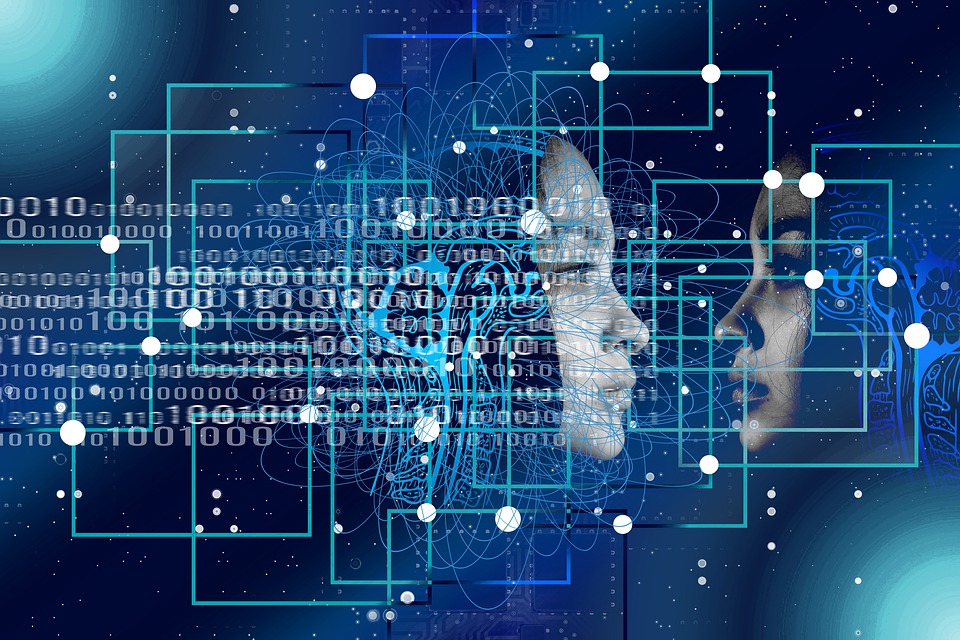Artificial Intelligence has made great strides in the last five years to become a part of almost all business processes in virtually every sector. The software industry, small, medium and large enterprises, have been able to produce top of the line software offerings at lower costs, thanks to the AI-powered tools and platforms that have made the entire software development cycle shorter and produced a conducive environment for innovation and experimentation.
Take a look at some statistics forecast by experts:
- The global custom application development services market is projected to grow to US$61billion in 2023. (Source: IDC)
- 37% of companies have implemented AI in some form, a 270% growth in the last four years. (Source: Gartner)
- Tech and finance services companies are recruiting 60% of AI talent. (Source: MMC Ventures)
- 95% of customer interactions will be powered by AI by 2025. (Source: finance digest)
- AI can boost business productivity by 40% by 2035. (Source: Accenture)
Not convinced how any of the above projections can come true? Let’s dive deep into some incredible ways in which AI tools are changing the fundamental way software development industry works.
Table of Contents
AI-ML make development faster
ML algorithms are vital to train the software into improving itself by studying enormous amounts of data, analysing, observing them, identifying patterns and making predictions/taking decisions. Whether it’s requirement analysis, code testing, deployment and QA or strategic decision making, AI and ML tools can build better, faster and more reliable products.
They have changed the face of business through Intelligent Process Automation (IPA) which makes services faster, intuitive,and products more innovative. For software developers, ML tools can detect violation or deviation from coding guidelines, get actionable insights on legacy codes, unmaintained code, top performing programs so that developers know what’s working and what’s a blockage in the entire development process. They help project management and forecast so that developers don’t have to bear the brunt of delayed development cycles. Software project delays have haunted project managers and clients perennially, who ultimately breathe down the developer’s neck. Software cost and time estimation can be made easier through early loophole detection, managing ambiguous requirements, automatic identification of key costs, and maintaining tight project schedules.
Automation in software development
Programmers have always been overwhelmed by their workload, endless coding sprints and reviews, which to them seems like grunt work. Enter automation in software development. A lot of development teams have successfully accomplished basic software automation with deep learning and gradient-based approaches, and cut down on repetitive tasks. Since the goal of software automation is not to make programmers and coders redundant (after all human touch is necessary for custom code) the idea is to make them more productive and innovative by enabling a degree of automation in mundane and repetitive programming tasks. An ideal framework should let you set in motion predefined repeat workflows which can run in the background while you can focus on high-value tasks.
Automation can be achieved by AI-powered coding assistants since they can help solve the problems of delayed projects, inferior quality coding and going over the budget by reducing the number of keystrokes and making appropriate AI-generated coding suggestions at the right time. Apart from the ever famous Kite for coding faster in Python and JavaScript inside Atom, another popular tool is autocompleter Deep TabNine which is likened to Gmail’s Smart Compose for coders.
NLP tools are the new game-changers
New and sophisticated NLP libraries, advances in the machine’s ability to read speech, text and images have aided software development greatly in the last five years. New attention-based models called Transformers can convert input sequences into output sequences using attention mechanisms.
BERT – Bidirectional Encoder Representations from Transformers – Google’s pre-trained model which was open sourced, helps understand nuanced language and context better in searches. Based on BERT, Facebook open sourced RoBERTa and called it a
“part of Facebook’s ongoing commitment to advancing the state-of-the-art in self-supervised systems that can be developed with less reliance on time- and resource-intensive data labeling.”
Python’s Natural Language Toolkit is already a great tool for exploration, classification, tokenization of words and sentences, however more app developers are becoming SpaCy loyalists as it regularly offers new NLP capabilities for real world results such as extended match pattern AI, and Language Modelling with Approximate Outputs is used to apply the pre-training to smaller models, and faster tokenization.
Not only will developers benefit from advanced sentiment analysis in social media in the near future, but they will also be able to design realistic chatbots that can understand sarcasm, humour and intuit the conversation tones.
Enhanced AR/VR development
Using latest image and facial recognition tools, developers can now design AI-powered driving automation software, city/restaurant/hospitality guides, virtual expos and fairs, and highly immersive gaming, shopping and entertainment apps.
Trending applications in 2020 also include indoor navigation, using mixed reality for training and education, hands-free AI tools for medical diagnosis and surgical assistance. These will be enabled by deep neural networks that can infer and detect 3D positions in real time and build even more immersive 3D meshes with higher precision.
Software developers in the field of gaming without substantial prior programming expertise are using tools like Unity, Gamemaker: Studio, Amazon Sumerian and Lumberyard, Blender, CryEngine, Maya etc. to create state-of-the-art storylines, background, characters and faster action.
Even physical sports leagues like the NBA are now collaborating with app developers to use AI powered AR VR to get higher engagement in their e-sport teams.
Bug fixing in real time
AI can be used to write new code (a tool like Kite for Python), edit it and identify bugs even as the code is being written, which can increase overall efficiency of software teams. In fact code review assistance can also be facilitated by AI-powered tools such as Review Board, Crucible, Collaborator.
AI-powered Deepcode, which is known as the software developer’s spell-checker, is the clear winner in terms of popularity. It brings to attention any security flaws, code vulnerabilities from semantic analysis of thousands of codebases.
AI platforms and tools provide choices for boosting developer’s productivity
These platforms need no introduction and their contribution to software development cannot be understated. Google Cloud AI, Microsoft Azure AI, IBM Watson, Salesforce Einstein, Azure Machine Learning Studio, TensorFlow, Infosys NIA, and Nvidia Deep Learning AI ( just to name the big names) have helped developers and businesses to reap enormous benefits of AI-ML powered data analysis, computation, automation, predictions, recommendations, conversational chatbots and cloud scalability.
ML tools can also create new codes from functionalities it has learned in Stack Overflow.
A suite of tools like Amazon Machine Learning or Google ML Kit for Mobile can help developers run code in device or in the cloud, create mL models at different skill set levels, so even beginners can catch up faster.
For machine learning development, developers look no further than TensorFlow, widely touted as the best open source ML framework with substantial support for neural networks. Another popular ML platform that democratises AI ML is H2O, supporting ML algorithms like gradient boosted machines, generalized linear models, deep learning.
Data visualization tools like Tableau can help make sense of the data through charts, graphs and maps and make prompt decisions.
Tools for testing
The use of AI and ML for testing automation has legitimately reached the next level with the prevalence of new and innovative tools such as Applitools, the tool for automated visual validation testing that finds visual bugs using a sophisticated algorithm. There’s also a host of codeless testing tools like Perfecto in which AI-driven bindings are responsible for 97% of app changes for multiple devices. Now AI and ML powered testing is capable of reducing rule-based decision systems, waterfall approaches as they’re geared towards detecting changes (bug vs added feature to be tested), running autonomously, fixing and updating tests, all without an engineer’s intervention.
AI-enabled design
UX UI design, which is a critical part of the entire web/mobile app development lifecycle from the end user’s point of view, is now being overhauled (in the best way) by advanced AI capabilities such as interactive chatbots and voice assistants, shopping and entertainment predictions/recommendations, prompt response, contextual feedback that acknowledge and understand the user’s input or query and lead to a highly satisfying customer journey.
Even at the design stage, AI-based prototyping tools (InVision, Sketch, Adobe XD) can save the designer’s time and effort by letting them envision and simulate the final product without actually completing it.
If the future of AI in the software industry seems unbelievably bright, rest assured there are reservations among some circles that AI will take over all jobs and replace developers.That’s highly unlikely because it’s the developers themselves who are creating the AI in the first place, so they’d know how to train the algorithms on how it needs to carry out a specific task and not how to take over the world.Many businesses find outsourcing to a software development company beneficial. Human intelligence, creativity and strategic thinking will be aided, not undermined by AI allies.
Also Read: How can Entrepreneurs leverage Artificial Intelligence to Grow their Business




